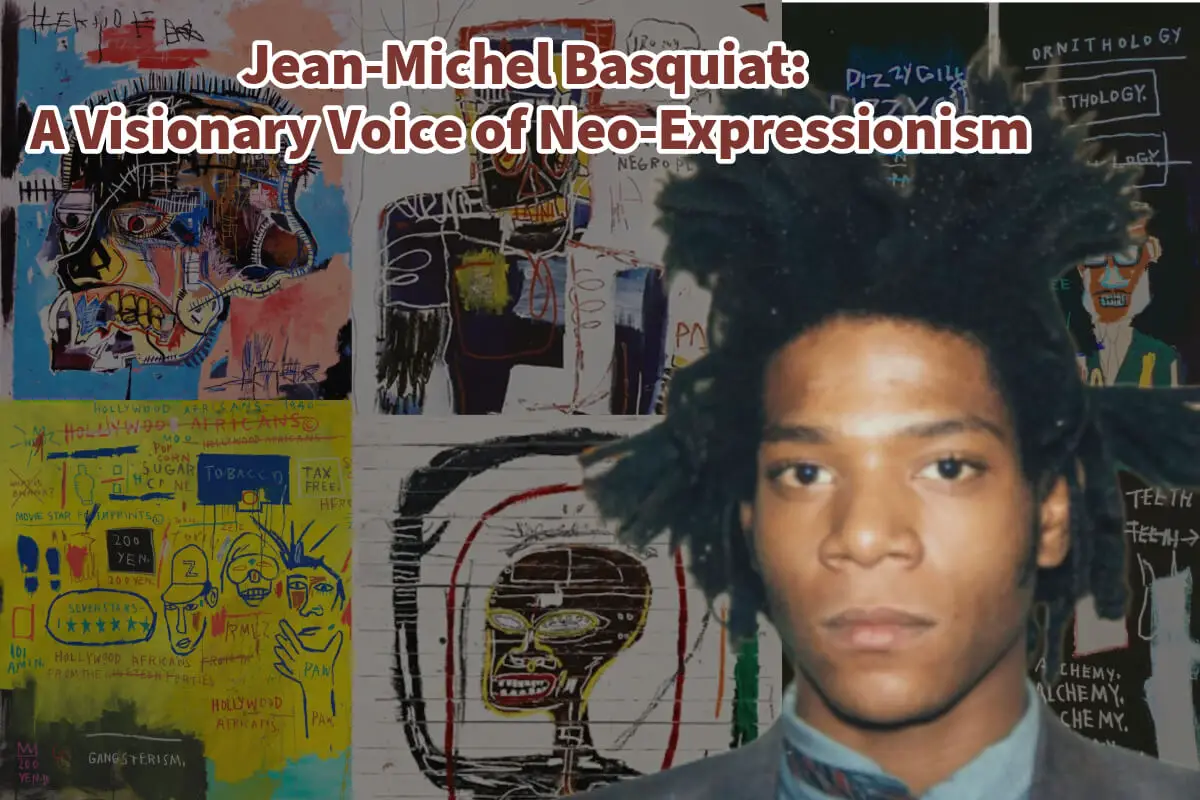Jean-Michel Basquiat is synonymous with the raw, unfiltered energy of 1980s New York City. He is truly an inspiring artist.
As a pioneer of the Neo-Expressionist movement, Jean-Michel Basquiat’s art served as a dynamic and unflinching commentary on race, identity, and society. Combining elements of graffiti, symbolism, and abstract expression, Basquiat’s works remain some of the most profound and provocative in contemporary art. This blog delves into his life, education, and significant works, offering insights into why Basquiat’s voice continues to resonate across generations.
Table of Contents
- Jean-Michel Basquiat: Early Life and Upbringing
- Jean-Michel Basquiat: The Rise of a Neo-Expressionist Icon
- Major Themes in Basquiat’s Work
- Jean-Michel Basquiat: Major Works of Art
- Jean-Michel Basquiat: The Impact of Fame and Struggles
- Why Basquiat Matters Today
- Related Questions
Jean-Michel Basquiat: Early Life and Upbringing
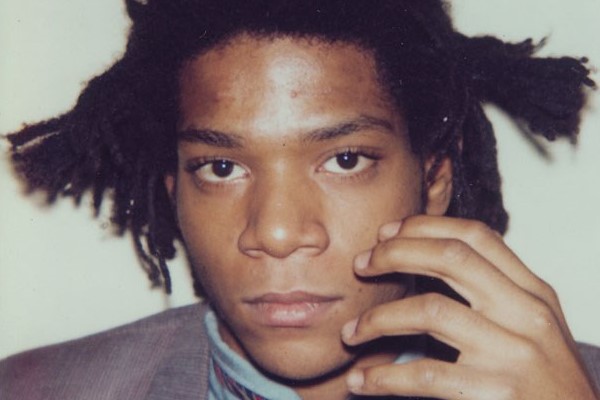
Born on December 22, 1960, in Brooklyn, New York, Jean-Michel Basquiat was the second of three children in a culturally rich household. His father, Gérard Basquiat, was Haitian, and his mother, Matilde Andrés, was of Puerto Rican descent.
This multicultural heritage profoundly influenced Basquiat’s art, evident in his frequent use of Creole, Spanish, and African symbols.
From a young age, Basquiat showed a natural talent for art. Encouraged by his mother, he visited museums, including the Brooklyn Museum and the Museum of Modern Art. His early exposure to the arts planted seeds of a remarkable career.
In 1968, tragedy struck when Basquiat was hit by a car, resulting in a prolonged hospital stay. His mother gifted him a copy of Gray’s Anatomy during his recovery. The book’s detailed medical illustrations left a lasting impression on Basquiat and became a recurring motif in his later works.
Education and Early Artistry
Basquiat’s formal education was tumultuous. He attended several schools but struggled to conform to traditional academic structures. By 17, he had dropped out of high school and decided to pursue art full-time.
Basquiat’s intellect and creativity were evident despite his lack of formal training. He was a voracious reader, drawing inspiration from literature, history, and art.
In the late 1970s, Basquiat emerged as a graffiti artist under the pseudonym “SAMO” (short for “Same Old Shit”). He tagged cryptic, poetic messages across Lower Manhattan alongside his friend Al Diaz.
Phrases like “SAMO as an end to mindwash religion” and “SAMO as an end to playing art” captured the countercultural spirit of the time and gained him underground fame.
By 1980, Basquiat had transitioned from graffiti to canvas, blending street art’s raw energy with the expressive techniques of Neo-Expressionism. This shift marked the beginning of his meteoric rise in the art world.
Jean-Michel Basquiat: The Rise of a Neo-Expressionist Icon
Basquiat’s big break came in 1981 when he participated in the group exhibition New York/New Wave at the Mudd Club, curated by Diego Cortez. His work caught the attention of prominent art dealers, including Annina Nosei, who offered him studio space and resources to create.
In 1982, Basquiat’s career skyrocketed. He became the youngest artist invited to participate in Documenta, a prestigious contemporary art exhibition in Kassel, Germany.
That same year, he collaborated with Andy Warhol, a partnership that blended Warhol’s pop art sensibilities with Basquiat’s raw, emotive style. The duo’s joint works were met with mixed reviews but highlighted Basquiat’s ability to stand shoulder-to-shoulder with art world giants.
Major Themes in Basquiat’s Work
Basquiat’s art is a tapestry of symbols, words, and imagery. His works often explore themes of:
Race and Identity:
Basquiat frequently addressed the Black experience in America. His use of African masks, historical references, and depictions of Black figures challenged racial stereotypes and celebrated Black excellence.
Power and Inequality:
Basquiat’s art critiques societal hierarchies and systemic oppression. His paintings often juxtapose wealth, poverty, fame, anonymity, power, and subjugation.
Mortality and Religion:
Influenced by his Catholic upbringing and personal experiences, Basquiat’s works include references to saints, angels, and mortality, reflecting his inner struggles and philosophical musings.
Medical Imagery:
Inspired by Gray’s Anatomy and his childhood accident, Basquiat incorporated skeletal forms, internal organs, and anatomical diagrams to explore themes of vulnerability and resilience.
Jean-Michel Basquiat: Major Works of Art
Basquiat’s portfolio is vast and varied, but several pieces stand out as defining his legacy:
Untitled (1981)
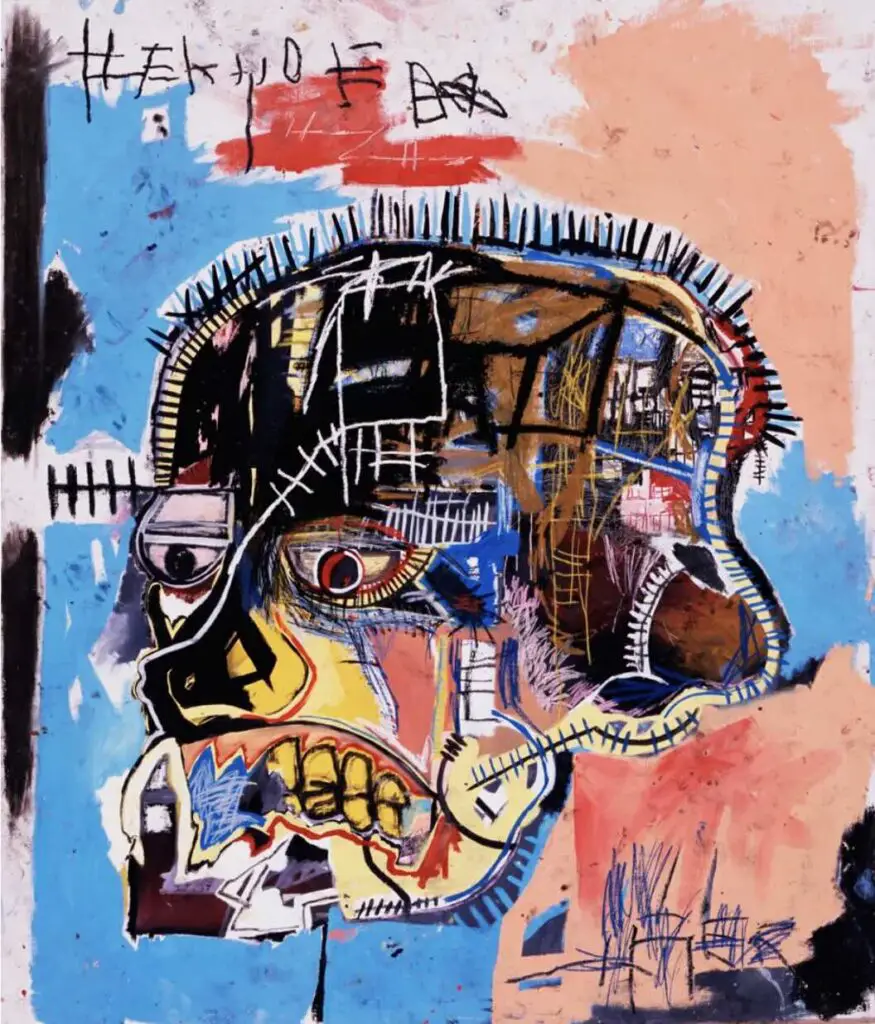
This vibrant work features a skeletal figure with exposed teeth and a crown of thorns. It exemplifies Basquiat’s raw, expressive style and fascination with anatomy and mortality.
Hollywood Africans (1983)
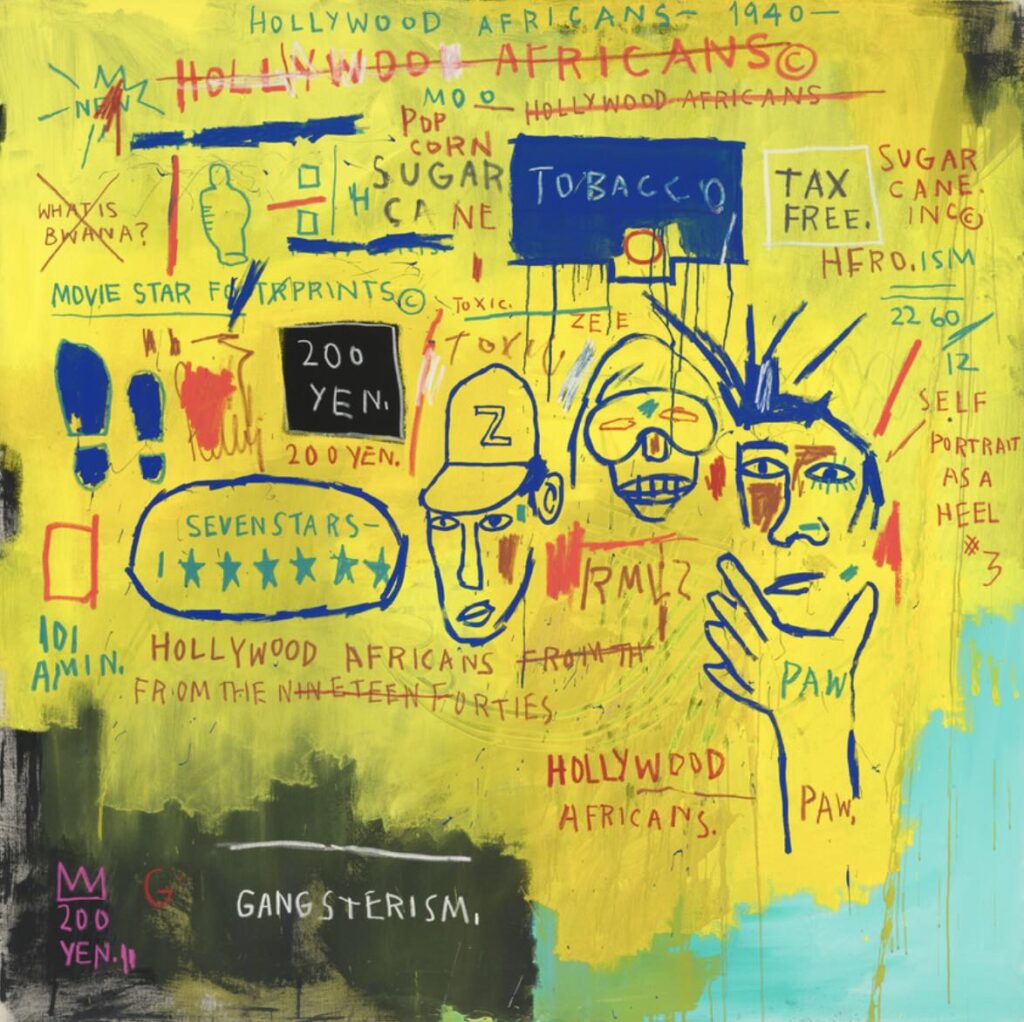
This painting addresses racial stereotypes in the entertainment industry. Basquiat’s use of text, including phrases like “Sugar Cane” and “Gangsterism,” critiques the commodification of Black culture.
The Irony of the Negro Policeman (1981)
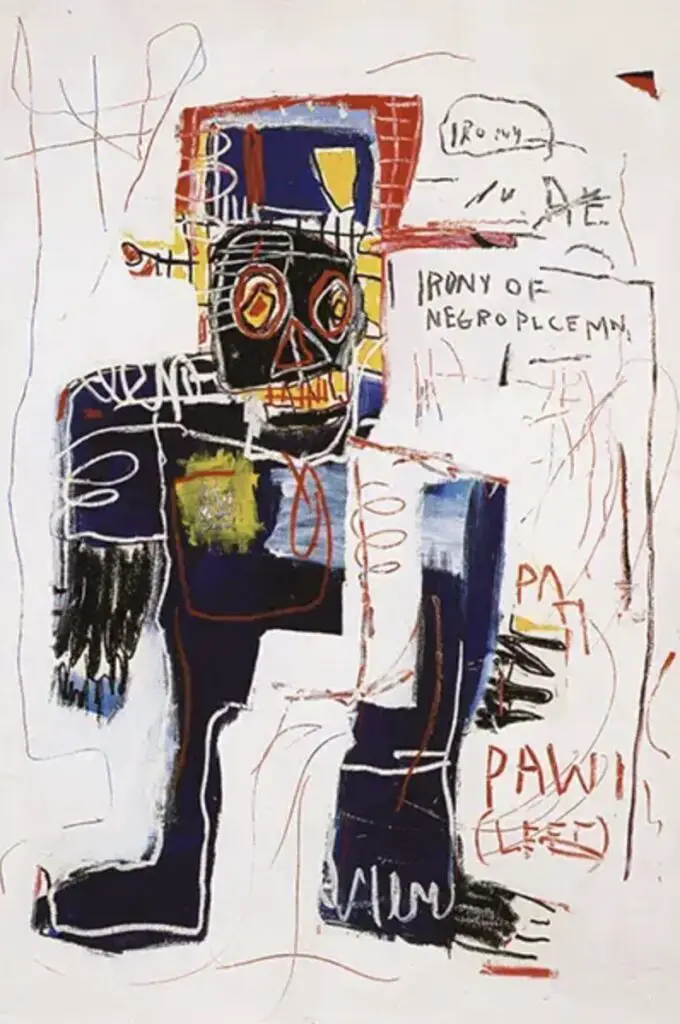
This politically charged piece critiques the role of Black individuals within systems of oppression. The skeletal figure, labeled “IRONY,” underscores the paradox of enforcing policies that perpetuate racial inequality.
Horn Players (1983)
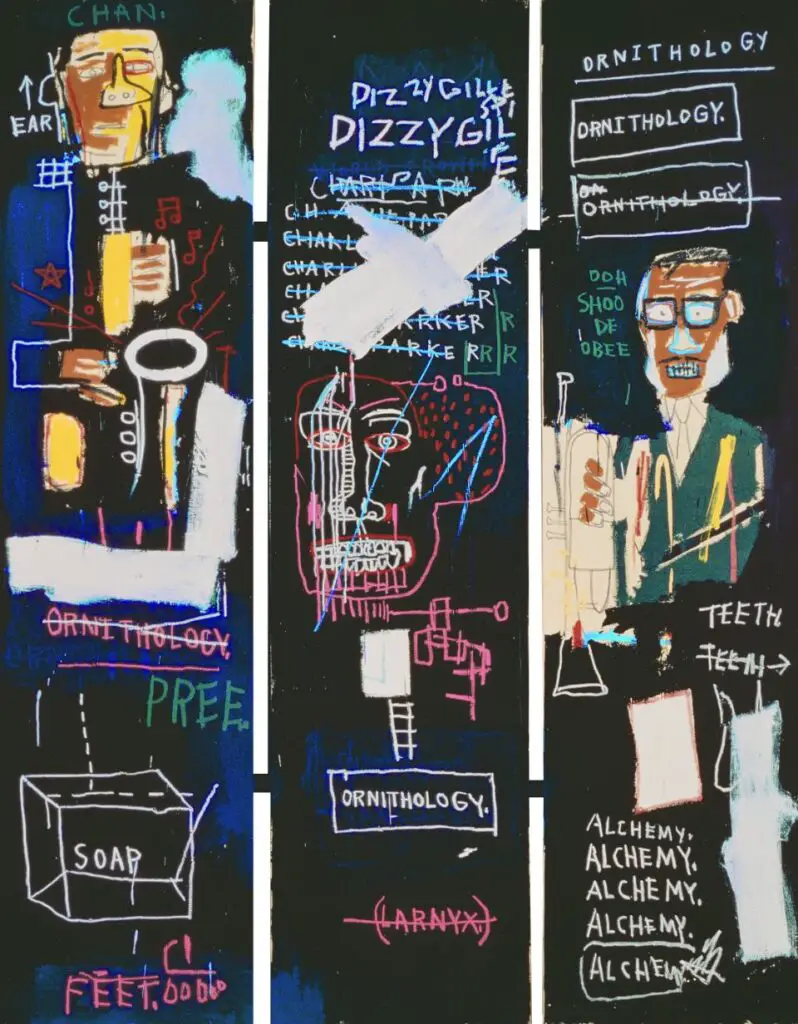
A tribute to jazz legends Charlie Parker and Dizzy Gillespie, this triptych celebrates Black musical innovation. Basquiat’s use of repetition, bold lines, and fragmented text captures the improvisational essence of jazz.
Flexible (1984)
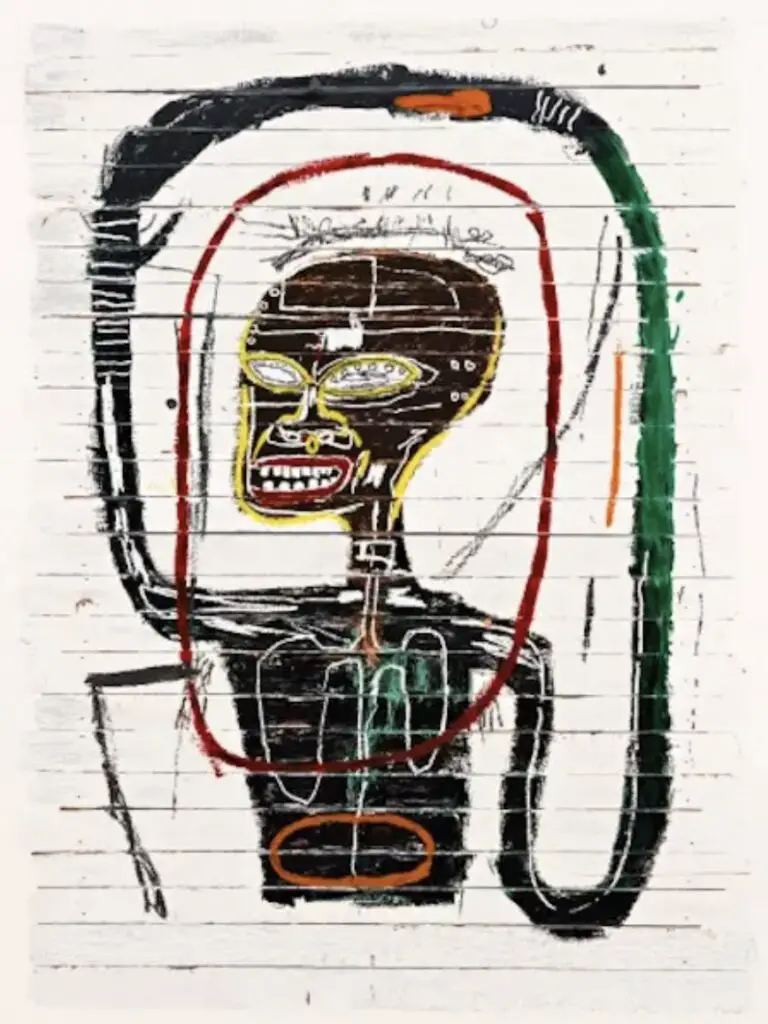
This piece features a striking figure with elongated limbs and a haunting expression. The text surrounding the figure reflects Basquiat’s ongoing exploration of identity and human experience.
Jean-Michel Basquiat: The Impact of Fame and Struggles
Basquiat’s rapid rise to fame came with immense pressure. He faced constant scrutiny as one of the few Black artists in a predominantly white art world. While celebrated for his talent, he also endured criticism that dismissed his work as overly simplistic or derivative.
The challenges of fame and personal struggles took a toll on Basquiat. He developed a dependency on drugs, which he initially used to cope with the demands of his career.
Tragically, on August 12, 1988, Basquiat died of a heroin overdose at the age of 27, cementing his status as a member of the “27 Club”—a group of talented individuals who died young.
Legacy and Influence
Basquiat’s influence on the art world is undeniable despite his untimely death. His works have become symbols of resistance, resilience, and creativity. They continue to command record-breaking prices at auctions, with his painting Untitled (1982) selling for $110.5 million in 2017, making it one of the most expensive artworks ever sold.
Basquiat’s impact extends beyond the art world. Musicians, designers, and filmmakers draw inspiration from his work. From Jay-Z’s lyrics to fashion collections by Off-White, Basquiat’s aesthetic and message resonate across cultural boundaries.
Why Basquiat Matters Today
Jean-Michel Basquiat’s art remains profoundly relevant in today’s social and political climate. His exploration of race, inequality, and identity continues to spark conversations about representation and justice. Basquiat’s ability to blend the personal with the universal ensures his voice remains a guiding light for new generations of artists and activists.
In a world that often seeks to categorize and confine creativity, Basquiat’s life and work remind us of the power of authenticity. Much like his spirit, his art defies boundaries, urging us to confront uncomfortable truths and embrace the beauty of imperfection.
Jean-Michel Basquiat’s story is one of brilliance, struggle, and transcendence. His work—a testament to the complexities of the human experience—stands as a vibrant, enduring symbol of the transformative power of art.
Listen To Our Podcast About What Makes Jean-Michel Basquiat a Visionary in Neo-Expressionism?
Below or By clicking here.
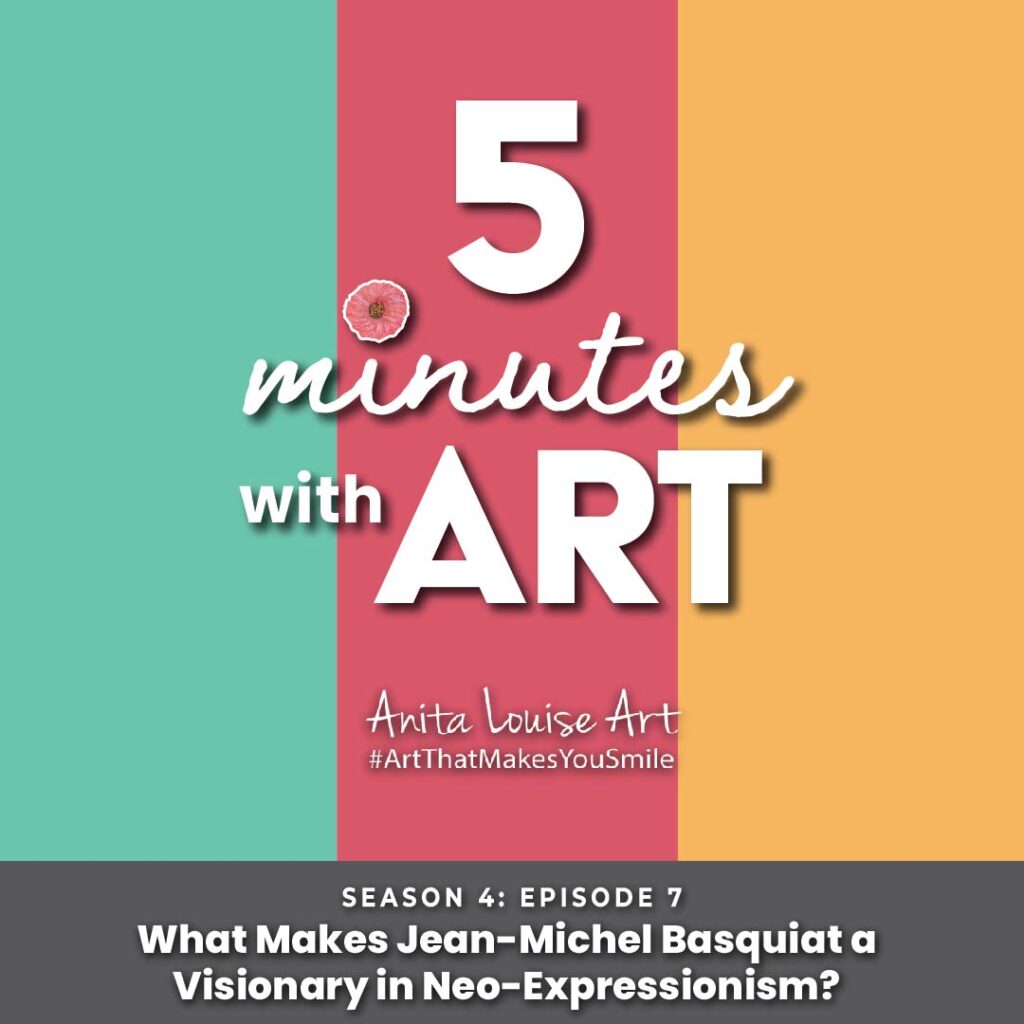
Anita Louise Art is dedicated to art education, great artists, and inspiring others to find and create their art. We love art that uplifts and inspires. #ArtToMakeYouSmile! #ArtToMakeYouHappy!
If you are interested to see any of my art, you can find out more by clicking here. If you are interested in what inspires me and my paintings, you can discover more by clicking here.
We have a free newsletter and would love you to be part of our community; you can subscribe to the newsletter by clicking here. If you have any questions, I would be happy to talk to you at any time. You can reach me, Anita, by clicking here.
Subscribe to our Anita Louise Art YouTube Channel, filled with great videos and information, by clicking here.
Join us for our podcast “5 Minutes With Art.” Spend 5 minutes a week with us to discover and learn about great art and artists. You can find out more about our podcast by clicking here.
Related Questions
Claude Monet And The Rise Of Japonisme
Japan opened its doors to the Western world for trade in 1853, and with that came a flood of Japanese art, artifacts, and textiles to Europe. Many Impressionist artists were fascinated with Japan, but one heavily influenced by Japanese art and the Japanese artist’s technique was Claude Monet.
By clicking here, you can discover more by reading Claude Monet And The Rise Of Japonisme.
Edgar Degas And The Influence Of Japonisme On His Work
Edgar Degas was among the Western artists deeply inspired by this Japanese art form. His works bear a clear imprint of the aesthetics and techniques he absorbed from Japanese Ukiyo-e masters. Read on; we delve into how his exposure to Japanese artistry shaped Degas’s art and examine some of his works that display this definitive influence.
You can discover more by reading Edgar Degas And The Influence Of Japonisme On His Work by clicking here.
Impressionism And The Influence Of Japonisme
The word Japonisme was used to describe the influence of Japanese art on Impressionism art. The Impressionism artists would study Japanese art and then incorporate parts of the Japanese art techniques and inspiration into their art. Japanese art influenced artists like Claude Monet, Vincent Van Gogh, Edouard Manet, Mary Cassatt, Edgar Degas, Paul Gauguin, James McNeill Whistler, and Henri de Toulouse-Lautrec.
By clicking here, you can discover more by reading Impressionism And The Influence Of Japonisme.

